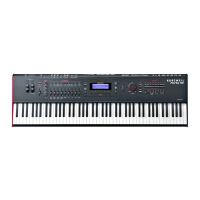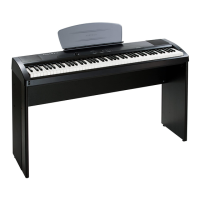Global Mode
FILE (Storage Page)
9-18
The Select Directory Dialogue
When storing, the PC4 will prompt you to select a directory in which to store.
ere are three navigating soft buttons on the left side of the bottom of the page:
NEWDIR
Create new directory. Calls up the New Directory dialogue
(see the following section)
OPEN Opens the highlighted directory
PARENT
Moves you up one level in the directory hierarchy. If the
display is already at the root directory, this button has no
effect.
When you have chosen your directory, press the OK soft button to go to the File Name
dialogue and complete the storing process (see below).
The File Name / New Directory Dialogue
When you store a le or create a new directory using the Storage Page, the PC4 prompts
you to enter a name with the File Name or New Directory dialogue. Edit the name using
the keypad, alpha wheel, Previous/Next buttons, Left and Right navigation buttons, and soft
buttons. Press the OK soft button to nish the operation.
LOAD
Use the LOAD page to load compatible les from a storage device.
To view the load page, plug a USB storage device into the PC4 and press the LOAD soft
button.
Use the navigation buttons, Previous/Next buttons or the Alpha Wheel to browse the les in
the storage device.
After selecting a le to load, press the OPEN, FILL or OVWRITE soft button to continue
OPEN
Pressing the Open soft button will open the highlighted folder or object
le.
PARENT
Selecting Parent will close an existing open folder.
FILL
Selecting FILL means you would like to keep the existing User objects.
PC4 will now load the User objects into the rst empty ID slot it nds,
and then subsequent empty slots.
OVERWRITE
(OVWRITE)
Selecting OVWRITE rst deletes all the existing User objects, and
then loads the new User objects using the object ID numbers stored in
the le. OVWRITE appears only when a .PC4 le is selected.

